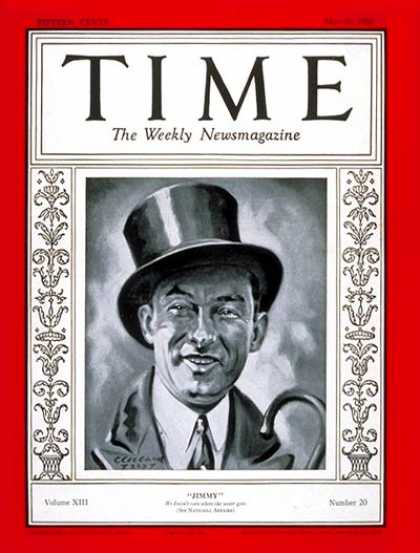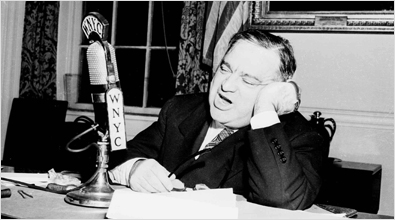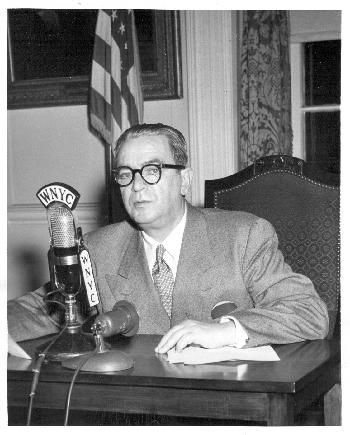Robert F. Wagner, Jr. (National Citizen’s / Liberal / Labor / Fusion / Republican)
January 1st 1950 to December 31st 1953
World War II didn’t make New York City, but it did transform it.
The Great Migrations of African Americans and Puerto Ricans reached new heights as those communities joined hundreds of thousands of others who came to the city to work at the war factories, the docks, and the services that kept them going. Besides precipitating the largest housing crisis in the nation's history, they would transform New York, the political, cultural, culinary, social and economic landscape being remade as the most linguistically diverse city in the world added dozens more dialects, accents, and languages to its repertoire. And with that change in mind, these new New Yorkers did what every German, Irish, Italian, Polish or Jewish Russian to settle in the city having made it off the dock had done before them, they organized. In some instances, the old machine in Harlem for example, organizations joined the machine with ease. In other instances it was clear for new groups that the old machine mechanisms had no interest in working with the new, why learn Spanish when you can keep with the Irish?
And then there were the servicemen. A million or so New Yorkers had gone to war, doing inglorious work on Liberty Ships, carrying rifles into swamps and up mountains and across machine gun swept beaches, flying supplies over “The Hump” and Ordinance over Berlin, manning cannon and machine gun and depth charge in dark, windy, and rough seas. And when they came home saving the world for democracy, many were horrified by the lack of it in their own city. But there was no where to go, Rural and Suburban Queens and Staten Island, or Westchester, or Nassau Counties were at their limits too, and anyway, New York City was where the work was, what was on Long Island? Grumman? Those factories were handing out notices left and right. And so they stayed in New York. And slowly built their new homes, and slowly found the jobs they deserved, and found that their service and the comfort they had defered was hitting the wall of Machine politics. And there was just something wrong about having to go to the Ward Boss for a job after Okinawa or The Bulge.
The VFW and the American Legion were overnight turned into new organizations, the old WWI vets who had made their political deals decades ago and mostly met up to talk old glory stories were shoved aside by new leadership and new chapters. Branches for returned servicemen in the NYPD, branches for returned servicemen in the Electricians Union, returned servicemen of Washington Heights, Ozone Park, The Lower East Side, Crotona Park. The always politically active Jewish, Catholic, Black and Hispanic Veterans Organizations received shots of new vigor.
In 1946 none of it mattered, reform Democrats, or the Republicans, American Labor, or New York Liberal were all defeated in practically every competitive race against Tammany. In 1948 overwhelming victory of the Democratic Party which saw the Republicans thrown on the ropes nationally saw them virtually eliminated in New York City politics.
To the Servicemen organizations, and the new political clubs across the city there was no form of relief yet. In California there were the Democrats to turn to when you were a minority, in the South, whites who had come to work in the factories could and did rally to the Republican Party. In New York city a third alternative would be needed. Which was why in January of 1949 Servicemen from across the city met in Madison Square Garden and declared the foundation of the National Citizen’s Party. Their platform was simple: Non-Partisan Government, and the end of the Ward System in the City. Tammany was horrified, the old reform elements in the city were thrilled, and at once, Community Organizations from across the city were calling.
A sign of the non-partisan nature of the party would be how it was endorsed both by President Marshall and Senator Taft, not to mention diverse political voices from columnist and former Second Lady Eleanor Roosevelt to Former Governor Tuttle.
It is an Irony of history that the Non-Partisan Servicemen’s candidate was a born politician but Robert F. Wagner, Jr, son of the long term, ultra liberal, ultra-Tammany US senator from New York, but if Bob Wagner learned anything flying supplies into Free China, it was that Democracy was worth fighting for.
In the end Wagner won, and the New City defeated the Old. Within six months of taking office the Charter Amendment passed, creating a Proportional Representation system electing a City Council with regional limits only placed on the the Boroughs of the city, as well as creating a City Ombudsman in the office of the elected Public Advocate. A Tammany effort to force the amendment to be approved via referendum failed to stop it and by 1952 the new City Council system was a law. The press, the mainstream national parties, and the servicemen congratulated themselves on a job well done, and were assured that Tammany was a dead letter, which in a way it was.
Robert F. Wagner’s administration took a technocratic approach to things after that. The National Citizen’s Party ran some Congressional tickets, and met with mixed success. Attempts to spread the party beyond New York, City and State met with general failure. It was clear going into 1952’s Mayoral election that the party was done, its one goal having been achieved. Robert F. Wagner, Jr. made that point abundantly clear when he announced that he was going to run for Congress instead of another term declaring that “The Party had Secured its VT Day: Victory over Tammany”. A small fringe would keep going for several years, most notably being remembered as the hosts for a series of VFW vs Legion Boxing matches throughout the 1960’s.
Robert F. Wagner, Jr. would win that Congressional seat, and hold it for thirty years, becoming one of the most prominent members of the Democratic Caucus. Servicemen’s organizations would go their separate ways, aligning with the Democrats and the Republicans, the old ward system would be occasionally lamented, but for the first time in state history, local, ethnic voting blocs would find themselves seats at the table, and real voices in the governance of their city.






